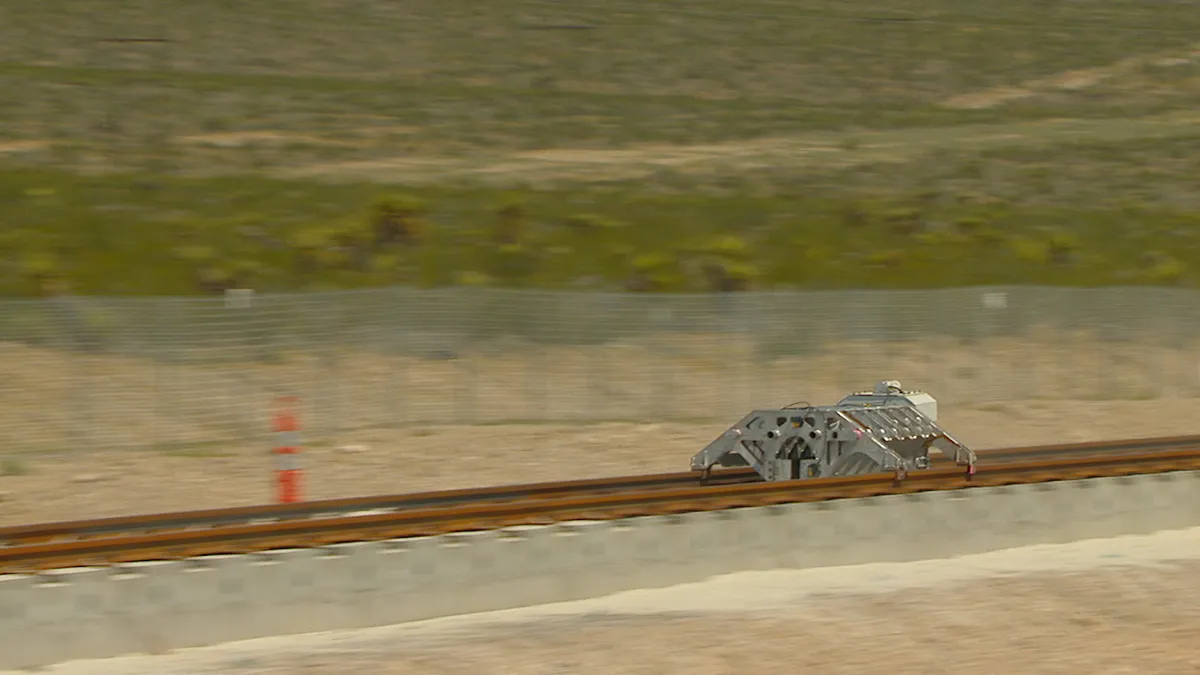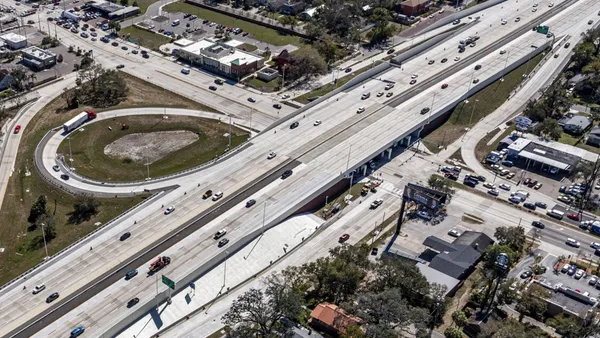Dive Brief:
- Hyperloop One has been rebranded as Virgin Hyperloop One after a significant investment by billionaire Virgin Group founder Richard Branson, according to TechCrunch.
- The amount of money Branson sunk into the Los Angeles-based company has not been announced, but, according to Reuters, the transportation visionary is now a member of the company's board of directors and is expected to push Virgin Hyperloop One's global expansion.
- Branson, according to The Guardian, said he wants to help bring airline speeds to ground transportation. The British businessman's other transportation holdings include Virgin Airlines and Virgin Galactic, a commercial spaceflight enterprise.
Dive Insight:
After Elon Musk laid down his hyperloop challenge back in 2013, Hyperloop One has emerged as a big player in the race to get a fully functional hyperloop system up and running.
Not including Branson's investment, the company has raised a total of $245 million and brought its valuation up to $700 million. Last month, the company picked 10 routes as finalists in its search for locations for its first three full-scale systems.
Virgin Hyperloop One is considering sites all over the world but has included four U.S. routes as well – Cheyenne, WY–Denver–Pueblo, CO; Chicago–Columbus, OH–Pittsburgh; Miami–Orlando, FL; and Dallas–Houston.
If the company chooses the Dallas-Houston route as one of the winners, it might have some competition from the planned high-speed train system between the two cities. Texas Central Partners' $12 billion, 240-mile rail project could also provide a lesson to Virgin Hyperloop One on the challenges of trying to acquire the land necessary for such an endeavor.
The rail company, which plans on funding the project with private investment, faced claims earlier this year that it was using questionable tactics in its efforts to secure the right to survey and acquire certain parcels. This drew the ire of some state legislators, who tried to scuttle the project through measures targeting the rail system, but those efforts were unsuccessful. One of the few pieces of legislation to survive was a bill that prohibited the state of Texas from providing any direct financial support for the project.











